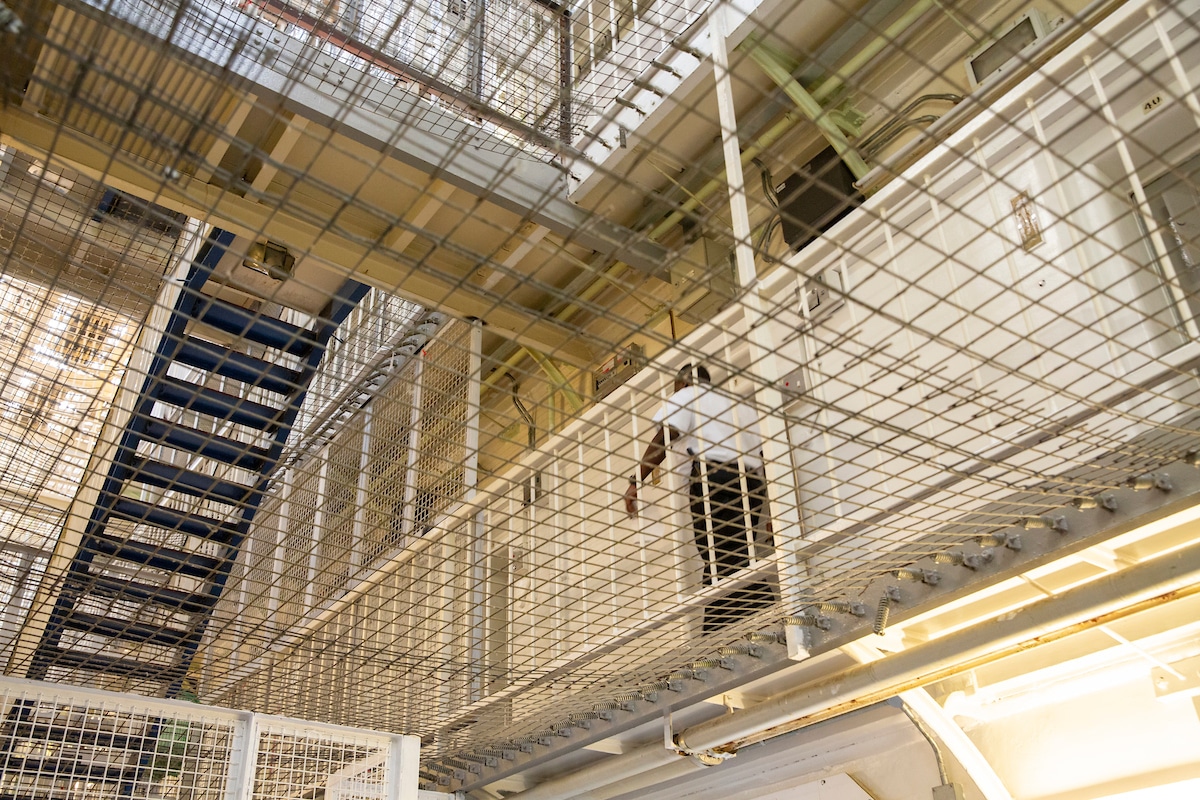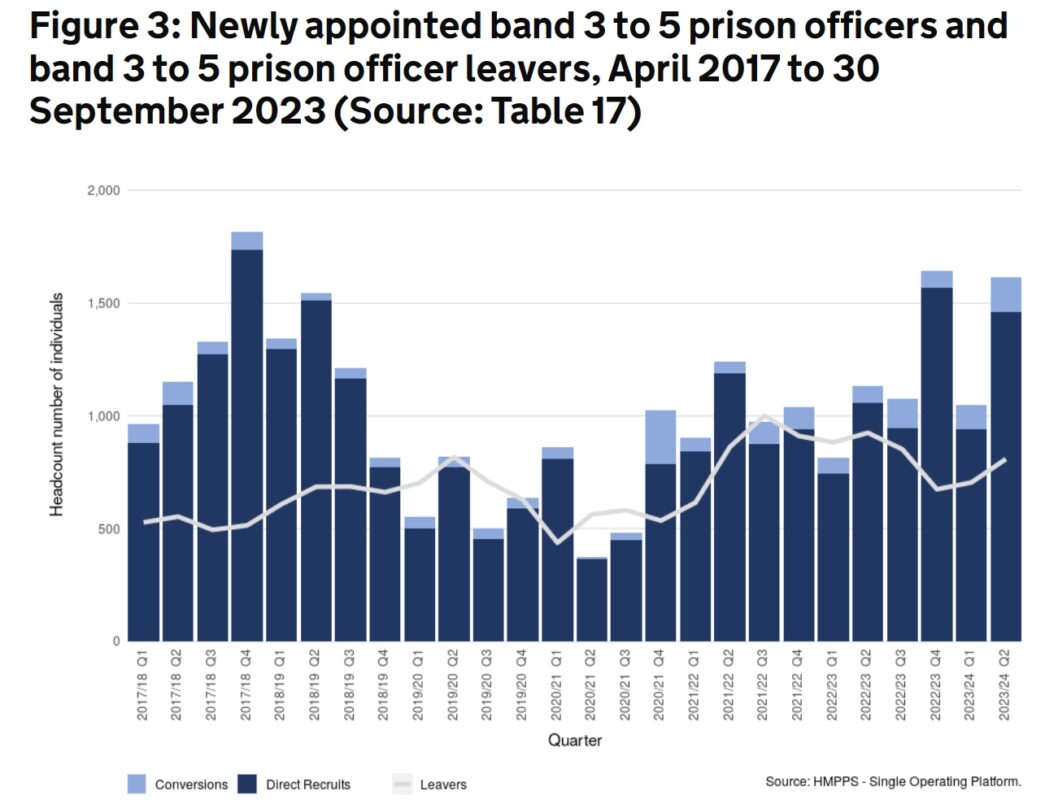HMPPS Workforce Statistics
Last week’s (16 November 2023) publication of the latest HMPPS workforce statistics which cover the period up to the end of September are the first grain of good news for the prison and probation services for a considerable period of time. The headline figures comparing this June – to September with the previous quarter are:
- 23,058 FTE (Full Time Equivalent) band 3-5 prison officers in post – an increase of 632 FTE (2.8%) prison officers compared to 30 June 2023.
- 5,409 FTE band 2 operational support prison staff in post – an increase of 257 FTE (5.8%) compared to 30 June 2023.
- 4,675 FTE band 4 probation officers in post – an increase of 257 FTE (5.8%) compared to 30 June 2023
- 6,641 FTE band 3 probation services officers: – a decrease of 160 FTE (2.4%) since 30 June 2023.
The prison workforce
There has been an increase of 1,441 FTE Band 3-5 prison officers (6.7%) since 30 September 2022. These are the key operational grades in public sector prisons: band 3 prison officers, band 4 officer specialists, band 4 supervising officers, and band 5 custodial managers. In 10 of the last eleven quarters, the number of newly appointed prison officers (including those existing staff who converted to a band 3 officer grade – mainly operational support staff who moved up) has been substantially larger than the number of these key grades leaving the service. You can see details in the chart below.
The leaving rate for band 3-5 prison officers was still high at more than one in eight (13.5%) but this was a fall of 1.5 percentage points in the year to this March.
The probation workforce
Key grades in the Probation Service include band 3 probation services officers, band 4 probation officers (collectively known as probation practitioners), as well as band 5 senior probation officers. Staff who are training to be a probation officer work as a probation services officer during their training, so a proportion of the probation services officers in post will be working towards the professional probation officer qualification.
As we have seen, there were 4,675 FTE band 4 probation officers in post on 30 September 2023). This figure is an increase of 304 FTE (6.9%) since 30 September 2022 and an increase of 257 FTE (5.8%) probation officers compared to 30 June 2023. We are starting to see the fruit of HMPPS probation officer recruitment drive with several PSOs completing their courses and becoming Probation Officers.
This factor is at least partly responsible for the fact that while the 6,641 FTE band 3 probation services officers in post on 30 September this year was an increase of 267 FTE (4.2%) on last year, it was still a decrease of 160 FTE (2.4%) over the last quarter.
There were also 1,505 FTE band 5 senior probation officers in post on the same date, showing an increase of 174 (13.0%) over the previous year and a slight increase of 24 (1.6%) compared to the last quarter.
However, it remains very important to note that the number of Probation Officers in post still represents a shortfall of 2,129 FTE against the required staffing level of 6,780 FTE. Not only does this (obviously) represent a very serious – and longstanding – understaffing problem, but workloads are likely to increase with the Government releasing prisoners early to ease prison overcrowding and promising to implement a new presumption against short prison sentences which would also increase the probation caseload.
Some of this pressure on staff can be seen in the annual sickness levels. Probation staff had an average sickness absence rate of 12.2 days per year which does represent a slight fall of 0.4 day on six months earlier. However, the more important fact may well be that 59.1% of these days sick were attributed to mental and behavioural disorders.
Conclusions
Although overall there is some encouragement to be taken from these figures, it is much to early to be confident about future progress. There was an improvement in the workforce figures two quarters ago, only for that progress to be reversed last quarter. It is clear that we need several quarters of sustained improvement before staff working in prisons and probation start to feel the benefit.
Thanks to Andy Aitchison for kind permission to use the header image in this post. You can see Andy’s work here









